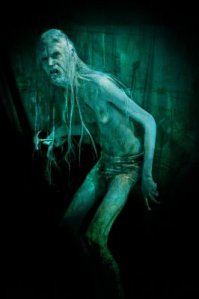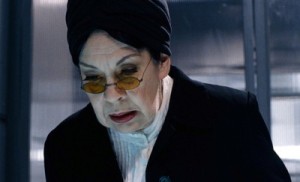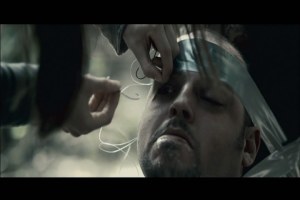Back in September of 2010, I wrote a blog entry entitled The horror films I probably won’t watch, and why in which I listed five films that, solely based on my knowledge of their content, I felt unlikely that I’d opt to view them. The five films were:
- Ruggero Deodato’s Cannibal Holocaust (1980).
- Salò or the 120 Days of Sodom (1975) by Pier Paolo Pasolini.
- The August Underground Trilogy (August Underground 2002, Mordum 2003, Penance 2007) created by the Pittsburgh-based film production/special effects/design company Toetag Pictures.
- The mondo-style films Faces of Death (1978), and it’s imitators Faces of Gore and Traces of Death.
- Irreversible (2002) directed by Gaspar Noé.
The main issue I had with the listed films were the common element of “cruelty for the sake of cruelty” — or, in other words, that the sadistic nature of their content existed only to titillate in the most exploitative manner possible. Of course, since I had not seen these films, I had only their reputation on which to base my decision.
In the six years since I originally wrote that post, curiosity has — perhaps, predictably –gotten the better of me. Of the five films on that list, I’ve watched two (and almost three) of them. Here are my thoughts on each, in the order in which they first appeared:
Deodato’s Cannibal Holocaust is, without doubt, a nasty film. Every frame of film looks smeared in blood, grime and sweat, probably because it actually was. The animal deaths are brutal and very real, and the actors endured a great deal of hardship while filming in the Amazon. The film is so notorious for the animal deaths, in fact, that I felt little shock when they finally happened as I’d read a great deal about them already. I was not prepared, however, for the casual manner in which violent rape was thrown on the screen. Now, if you’ve watched any number of 70’s Italian exploitation films, you’ll already be aware that rape is depicted with a great deal of frequency. Cannibal Holocaust is no different in that regard, but it’s much more violent here. Then again, this is a brutally violent world that Deodato is creating for us, and he does this quite effectively. The first half of the film, with the rescue team heading into the Amazon to locate the missing filmmakers, is frankly a bit boring. Things improve considerably in the second half, with the executives in New York viewing the footage recovered by the rescue team. This is where the whole “found footage” conceit kicks in, and is without question the greatest contribution Cannibal Holocaust has made to the horror genre. We’d probably not have The Blair Witch Project without the shaky, hand-held camera and POV-style of this earlier film.
The gore is spectacular and reasonably well executed, with the iconic impalement scene standing out as an impressive achievement in practical special effects. Sure, all the blood looks like red paint but, hey, it’s 1979-80. By the end of the film-within-a-film, you’re basically cheering on the natives to take their bloody vengeance on the monstrous Euro-American filmmakers — and boy, do they ever. If you consider yourself more than a casual horror film fan, then you owe it to yourself to watch Cannibal Holocaust at least once. Of the Italian cannibal films, it’s probably the best (though I haven’t seen all of them).
Incidentally, Eli Roth’s 2013 offering The Green Inferno is basically a mash-up of this film with Umberto Lenzi’s Cannibal Ferox (itself a complete retelling of the basic plot in Deodato’s film). Roth’s rehash pales in comparison to the brutality of the earlier films, partly owing to the fact that one simply couldn’t make those films nowadays (laws protecting animal rights in films were passed after the making of Cannibal Holocaust). The only change Roth makes to his film which I felt worked was the repositioning of the native tribe from “peaceful victims pushed to violence” to very purposeful and sadistic predators. The cheerfully privileged college student-activists in The Green Inferno die out of sheer First World naïveté which — aside from a problematic view of non-white “primitives” as the menacing Other — is an interesting re-contextualization of the traditional cannibal film narrative.

Salò or the 120 Days of Sodom (1975) by Pier Paolo Pasolini.
I tried to watch Salò or the 120 Days of Sodom, I really did. I only made it about 45-minutes into the film before I switched it off. Sure, the cinematography was fabulous and the acting seemed very competent … but, it was so fucking boring. Judging from the first 45-minutes only, it appeared that the sadistic fascists planned to bore their adolescent victims to death with all their incessant talking, talking, talking. One has to suppose that all the infamous rape, torture and shit-eating occurs much later in the film. Perhaps several cups of coffee are required to view this lengthy piece of arthouse-smut. I may follow-up with a films I said I wouldn’t watch because they were so boring, but I persevered anyway post at a future date.
I haven’t watched any of the August Underground Trilogy yet, and I’m still on the fence about them. I may give-in to my curiosity late one night, when I’m feeling up to the challenge of a film that features a headless, maggoty toddler corpse. These films are not available (nor will ever be available) on streaming media like Netflix. One has to dig in the deeper, darker places of the Internet to unearth these atrocities.

One version of artwork for the “Faces of Death” VHS case.
I have, however, watched the infamous Faces of Death (1978), and found the film completely hilarious. I recall closely studying the VHS case at my local Blockbuster Video when I was a teen in the 80’s, curious about the title but too intimidated to actually rent it. Banned in 46 countries! Depiction of actual death!
Lacking any sense of true narrative, the film is a cobbled-together series of newsreel and documentary footage showing fatal accidents, war photography, human autopsies, and animals being dispatched in slaughterhouses, all loosely connected by the authoritative voiceover of our death-tour guide, the fictitious Dr. Francis B. Gröss. Some of the footage is clearly (and, in some cases, laughably) staged reconstructions of reputedly real events. The segment featuring a group of American tourists supposedly eating monkey brains in some exotic locale is laugh-out-loud ridiculous.
The final film, the Gaspar Noé directed Irreversible (2002), I plan to watch at a future date. It’s such a seminal film within the framework of “New French Extremity” that I feel I should, though I seldom feel like settling-in to witness Monica Bellucci get violently raped for several, protracted minutes. Blech. Still, the time-reversal conceit seems like an interesting one.
Anyway, happy Halloween horror-viewing!























